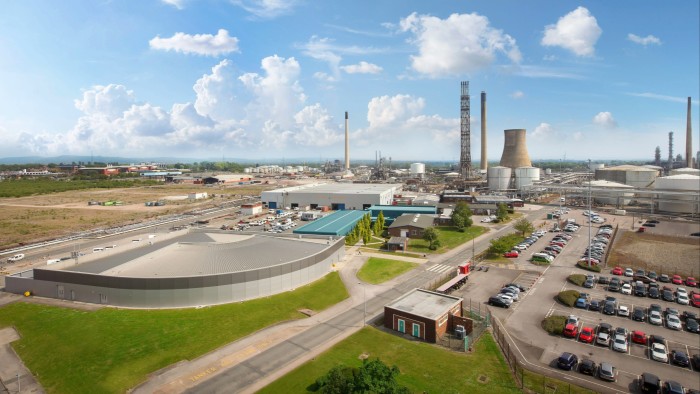Share this @internewscast.com
Unlock the Editor’s Digest for free
The UK government and Italian energy company Eni will announce on Thursday the final go-ahead for a 38-mile pipeline to gather carbon dioxide from industrial plants around Liverpool and Manchester and bury it offshore.
Two people familiar with the project said the announcement would be made as more than 60 leaders gathered in London for a two-day summit on energy security.
Eni’s pipeline is a crucial part of HyNet North West, an industrial cluster that will include new plants to produce hydrogen to be used by local manufacturers.
The project’s backers say that the 350,000 manufacturing jobs in the region will be safer in the future as a result of the plan and that it will create £17bn of economic value over the next 25 years.
The Italian company plans to initially store 4.5mn tonnes of carbon dioxide a year in a number of depleted gasfields 0.6 miles beneath the seabed in Liverpool Bay, rising to 10mn tonnes after 2030, the equivalent of the annual emissions of 4mn cars.
Last October, the government said it would back HyNet and another project on the east coast, Net Zero Teeside, with almost £22bn of support over 25 years.
At the time, Eni’s chief executive Claudio Descalzi said the support was a “significant step” to setting up a British carbon capture industry. Eni’s pipeline also won planning permission in March, clearing the way for the final investment approval.
The government said in October that the projects in Merseyside and Teesside would “inject growth into the industrial heartlands of the North-west and North-east of England”.
But there have been concerns that little money is left over for other carbon capture projects that were vying for government support, notably projects in the Humber and Scotland.
Eni declined to comment.
Meanwhile, Keir Starmer, UK prime minister, announced he would make £300mn available for offshore wind projects ahead of the outcome of the government’s spending review in June.
The funding is designed to make projects less risky for private investors and to build supply chains for new technologies such as floating wind platforms.
Additional reporting by Jim Pickard












